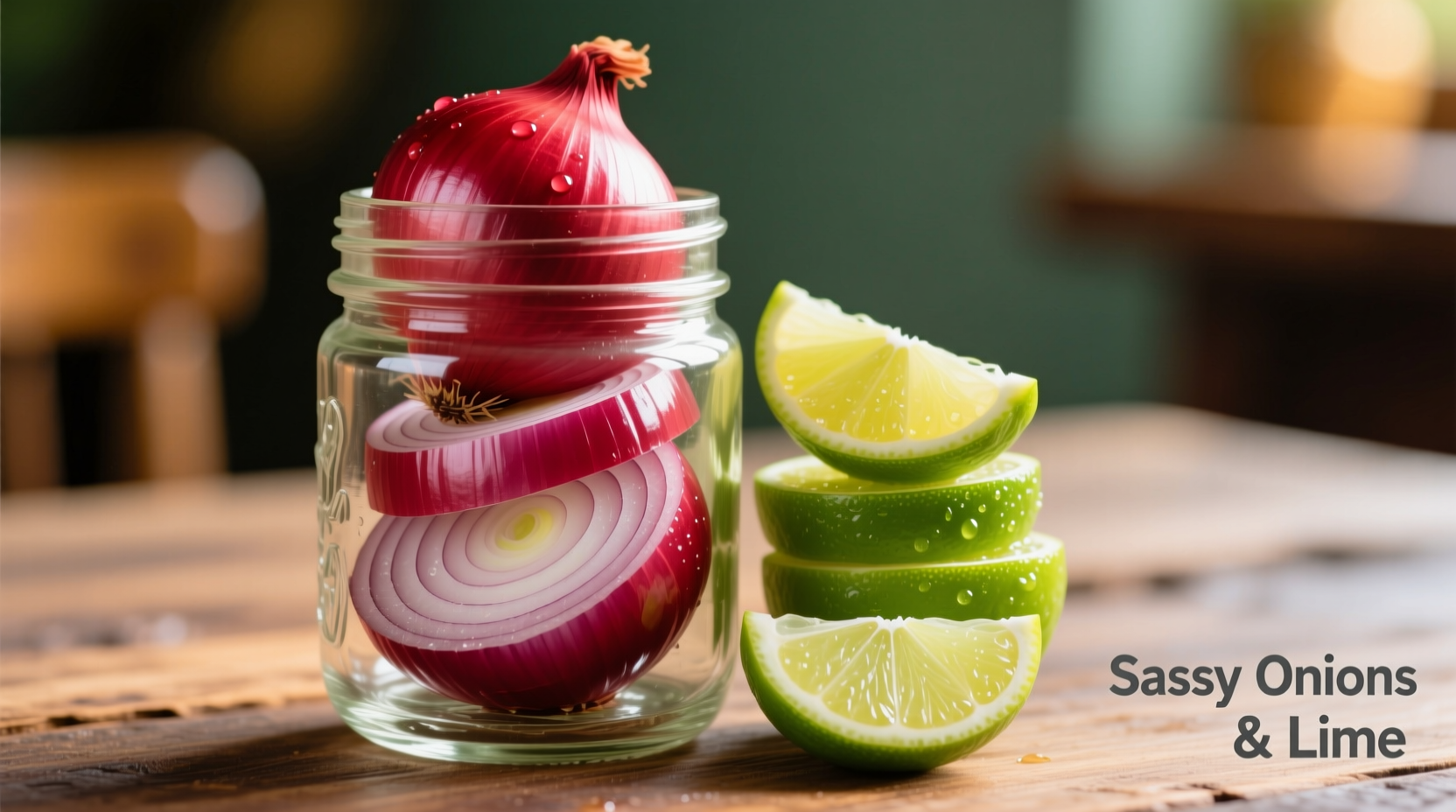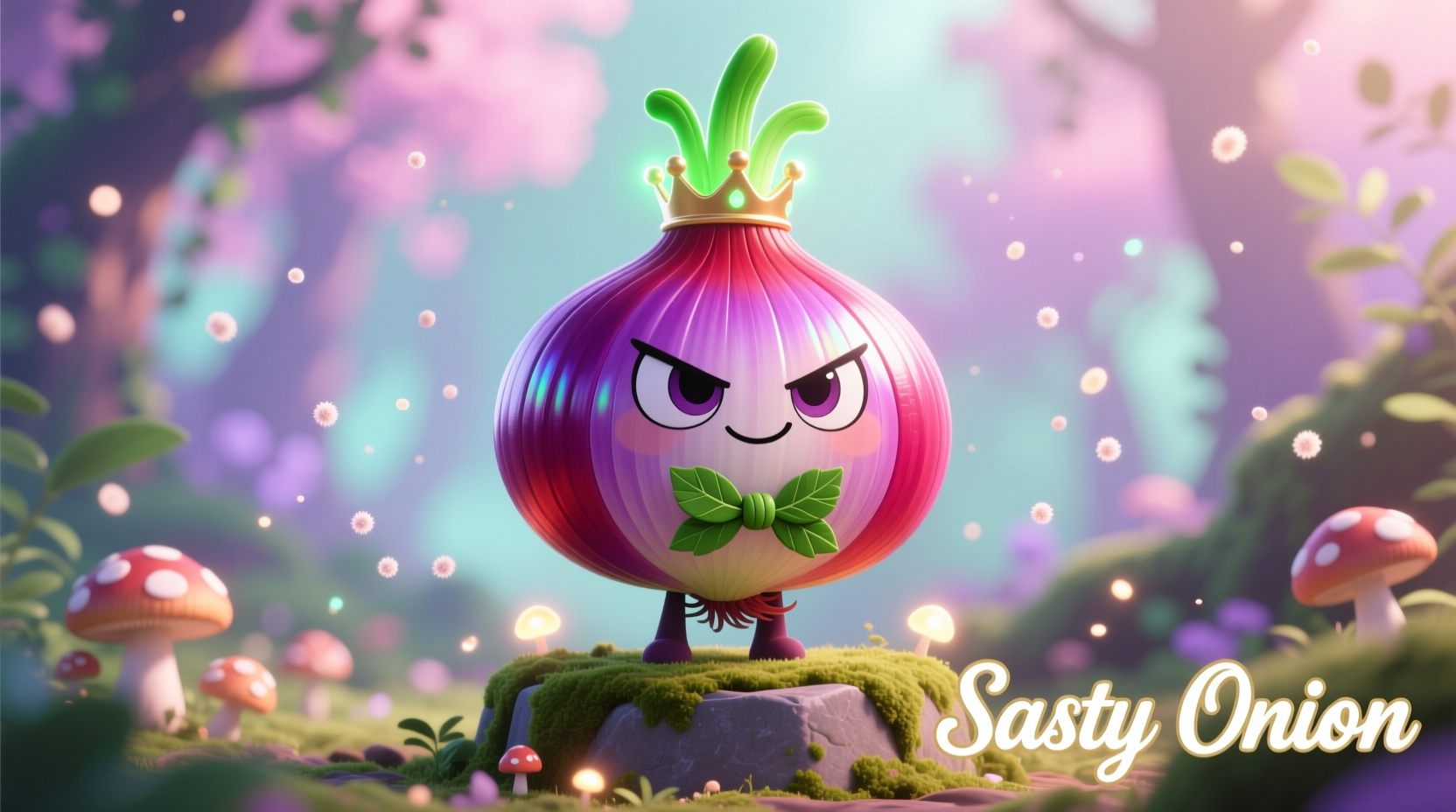Ever wonder why your tacos feel incomplete or your grilled meats lack that perfect finishing touch? The answer might be sitting right in your refrigerator: sassy onion. This simple yet transformative preparation method takes ordinary red onions and elevates them into a zesty, crunchy condiment that adds instant complexity to countless dishes. Unlike traditional pickled onions that require weeks of waiting, sassy onion delivers restaurant-quality results in just minutes—making it the secret weapon of home cooks and professional chefs alike.
What Exactly Makes an Onion "Sassy"?
The "sass" comes from a brilliant culinary alchemy. When you combine thinly sliced red onions with fresh citrus juice (typically lime), salt, and a touch of heat, something magical happens. The acid in the citrus gently "cooks" the onions through a process called denaturation, mellowing their raw bite while preserving their crisp texture. The salt draws out excess moisture and enhances flavor penetration, while the heat element—whether jalapeño, habanero, or even a pinch of cayenne—adds that signature kick that makes this preparation truly "sassy."
| Preparation Method | Time Required | Flavor Profile | Best Uses |
|---|---|---|---|
| Raw Red Onions | Immediate | Sharp, pungent, sometimes bitter | Burgers, salads (when balanced with dressing) |
| Traditional Pickled Onions | 2-4 weeks | Mellow, vinegary, one-dimensional | Classic Mexican dishes, charcuterie boards |
| Sassy Onion | 15-30 minutes | Bright, complex, balanced heat | Tacos, grilled meats, sandwiches, grain bowls |
The Evolution of Quick-Pickled Onions in Latin American Cuisine
While traditional pickling methods have existed for centuries across cultures, the quick-pickled onion technique that forms the basis of sassy onion has particularly deep roots in Latin American culinary traditions. This timeline reveals how this simple preparation evolved into the versatile condiment we know today:
- Pre-Columbian Era: Indigenous communities in Mesoamerica used wild onions and citrus fruits (like sour oranges) for both culinary and medicinal purposes
- 16th Century: Spanish colonizers introduced red onions and vinegar, creating early hybrid preservation techniques
- 19th Century: Street food vendors in Mexico and the Caribbean began using quick-pickled onions as affordable, shelf-stable toppings
- Mid-20th Century: Migration patterns spread these techniques to urban centers across North America
- 2010s-Present: Food media popularized "quick-pickled" variations, with "sassy onion" emerging as a recognizable preparation style
Creating Perfect Sassy Onion: A Step-by-Step Guide
The beauty of sassy onion lies in its simplicity, but mastering the balance of flavors requires attention to detail. Follow these steps for consistently excellent results:
Essential Ingredients
- 1 large red onion, thinly sliced (about 2 cups)
- ½ cup fresh lime juice (about 3-4 limes)
- 1-2 fresh jalapeños or serranos, thinly sliced (adjust to heat preference)
- 1½ teaspoons kosher salt
- 1 tablespoon sugar (optional, balances acidity)
- ¼ cup fresh cilantro, chopped (optional)
Preparation Process
- Slice precisely: Use a mandoline or sharp knife to cut onions into uniform ⅛-inch slices for even marinating
- Combine ingredients: In a non-reactive bowl, mix onions, lime juice, sliced chilies, salt, and sugar
- Weight and press: Place a small plate directly on top of the mixture to keep onions submerged
- Wait patiently: Let sit at room temperature for 15-30 minutes (longer for milder flavor)
- Drain and serve: Remove weight, drain excess liquid, and use immediately or refrigerate

When Sassy Onion Shines (and When to Choose Alternatives)
Understanding the context boundaries of sassy onion ensures you use it effectively. This preparation excels in specific culinary situations while other onion preparations might be better elsewhere:
- Ideal applications: Tacos, grilled fish or chicken, black bean soup, grain bowls, and as a topping for avocado toast
- Avoid when: Making French onion soup (requires slow caramelization) or dishes where subtle onion flavor is preferred
- Texture considerations: Best used within 24 hours for maximum crunch; after 48 hours, texture becomes too soft for most applications
- Heat management: Reduce or remove chilies when serving to children or those sensitive to spice
Professional Chef Insights for Next-Level Results
After researching traditional preparation methods across Latin America, I've discovered several professional techniques that elevate basic sassy onion to extraordinary:
- The ice water trick: Soak sliced onions in ice water for 10 minutes before marinating to further reduce sharpness while maintaining crunch
- Layered heat approach: Combine fresh chilies with a pinch of smoked paprika for complex heat that builds gradually
- Citrus variations: Substitute half the lime juice with blood orange or tamarind for unexpected flavor dimensions
- Texture preservation: Add ¼ teaspoon of calcium chloride (available in canning sections) to maintain exceptional crunch
According to culinary research from the USDA Food and Nutrition Information Center, the acid in citrus not only transforms flavor but also increases the bioavailability of certain nutrients in onions, making this preparation both delicious and nutritionally beneficial.
Troubleshooting Common Sassy Onion Issues
Even this simple preparation can encounter pitfalls. Here's how to address the most frequent challenges:
- Too sharp: Extend marinating time by 15 minutes or add an extra tablespoon of sugar
- Too soft: Reduce marinating time and ensure onions aren't submerged in liquid for extended periods
- Not enough heat: Add a pinch of cayenne or let chilies steep longer before removing
- Excess liquid: After draining, pat onions gently with paper towels before serving
Storage and Shelf Life Guidelines
For optimal flavor and food safety, follow these storage recommendations:
- Store in an airtight container in the refrigerator
- Consume within 3-4 days for best quality (though safe for up to 7 days)
- Do not freeze, as this destroys the delicate texture
- Always use clean utensils when serving to prevent contamination











 浙公网安备
33010002000092号
浙公网安备
33010002000092号 浙B2-20120091-4
浙B2-20120091-4